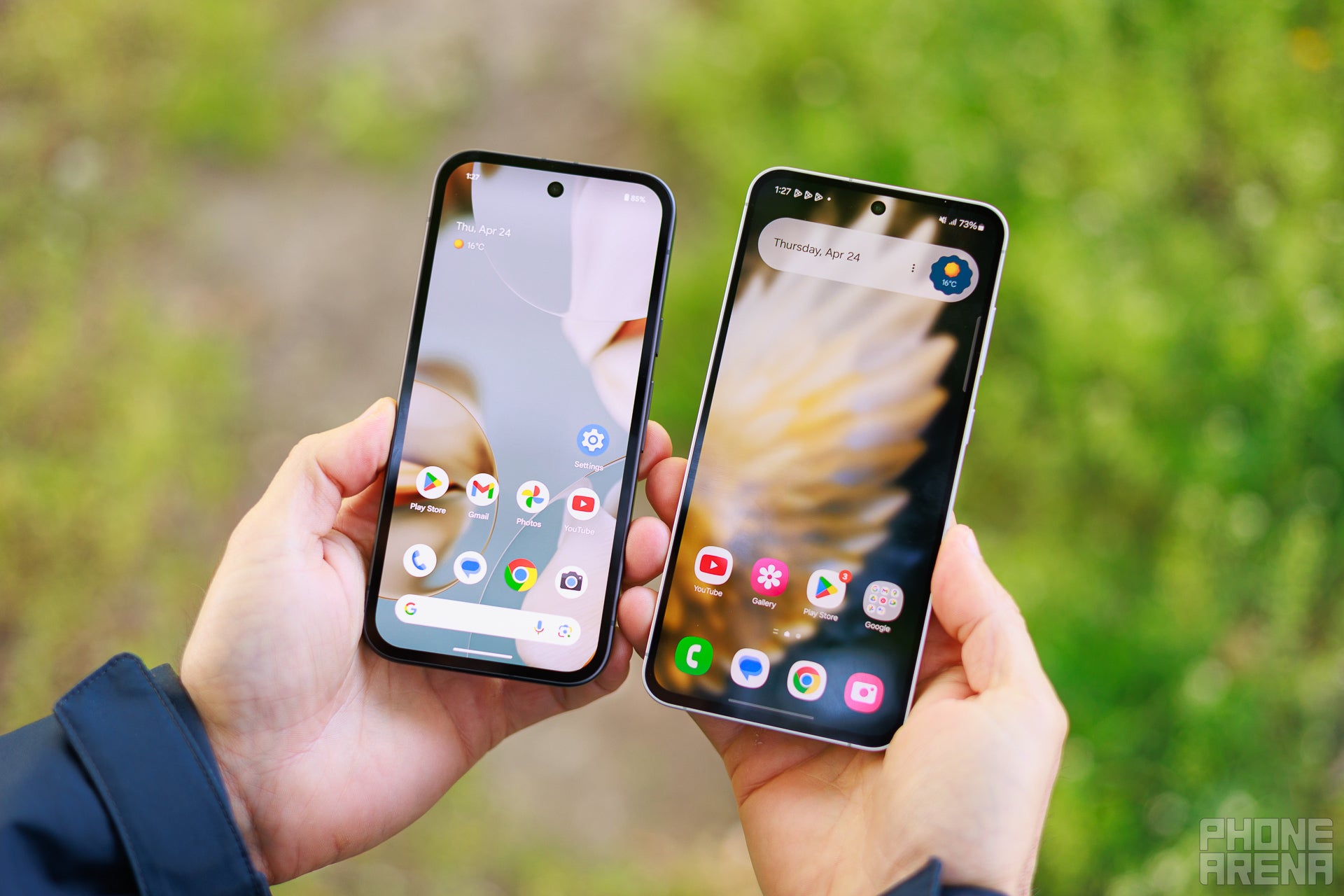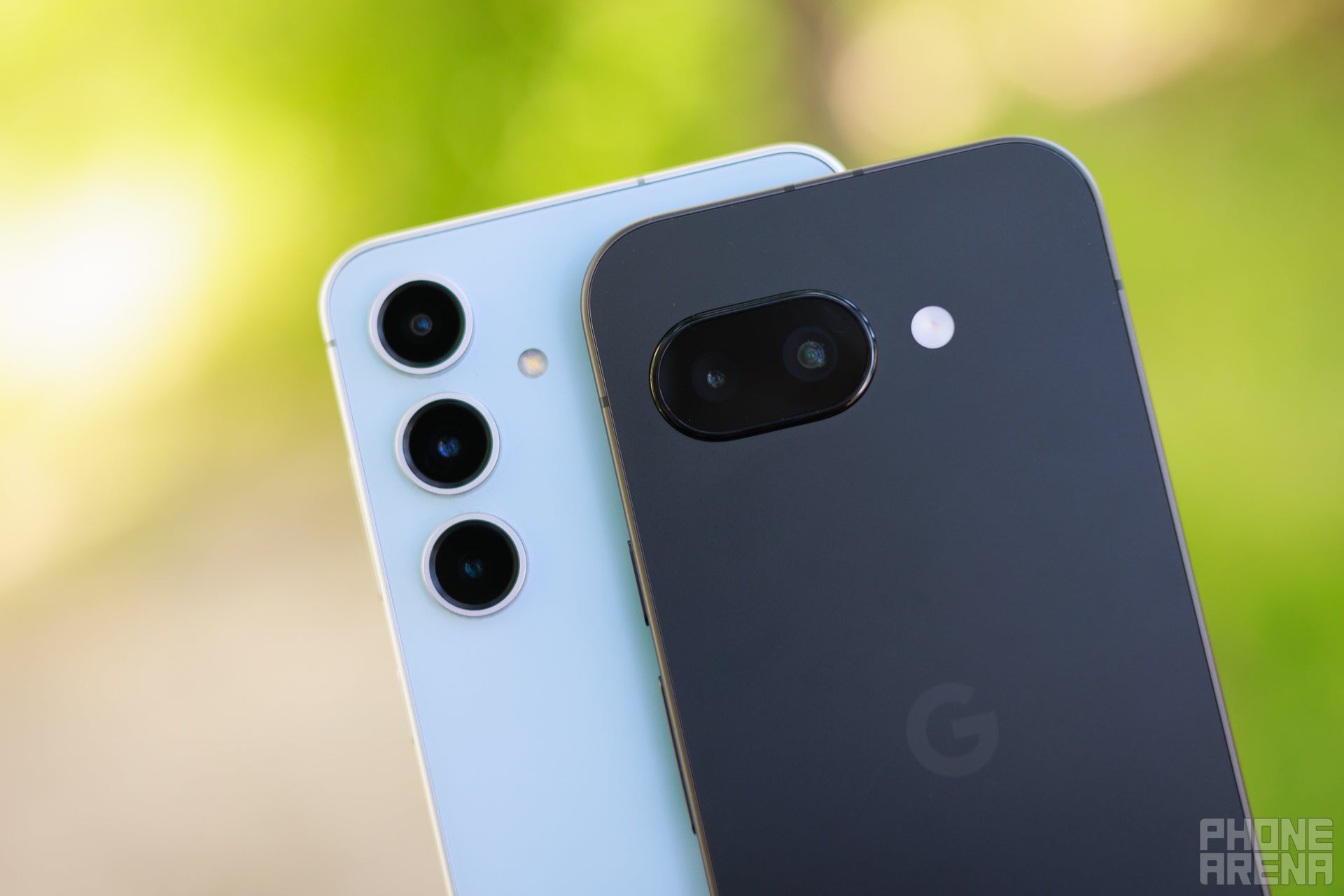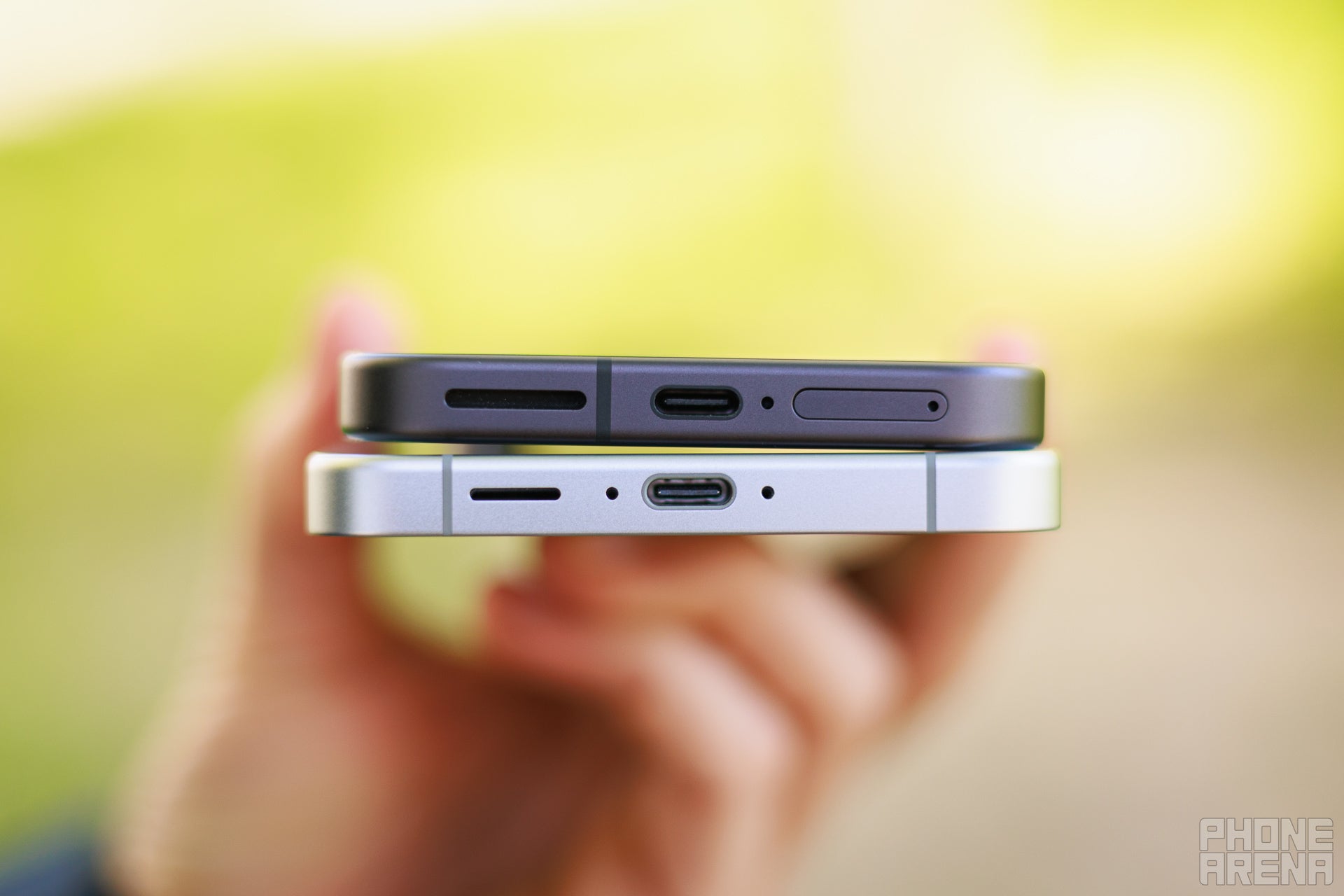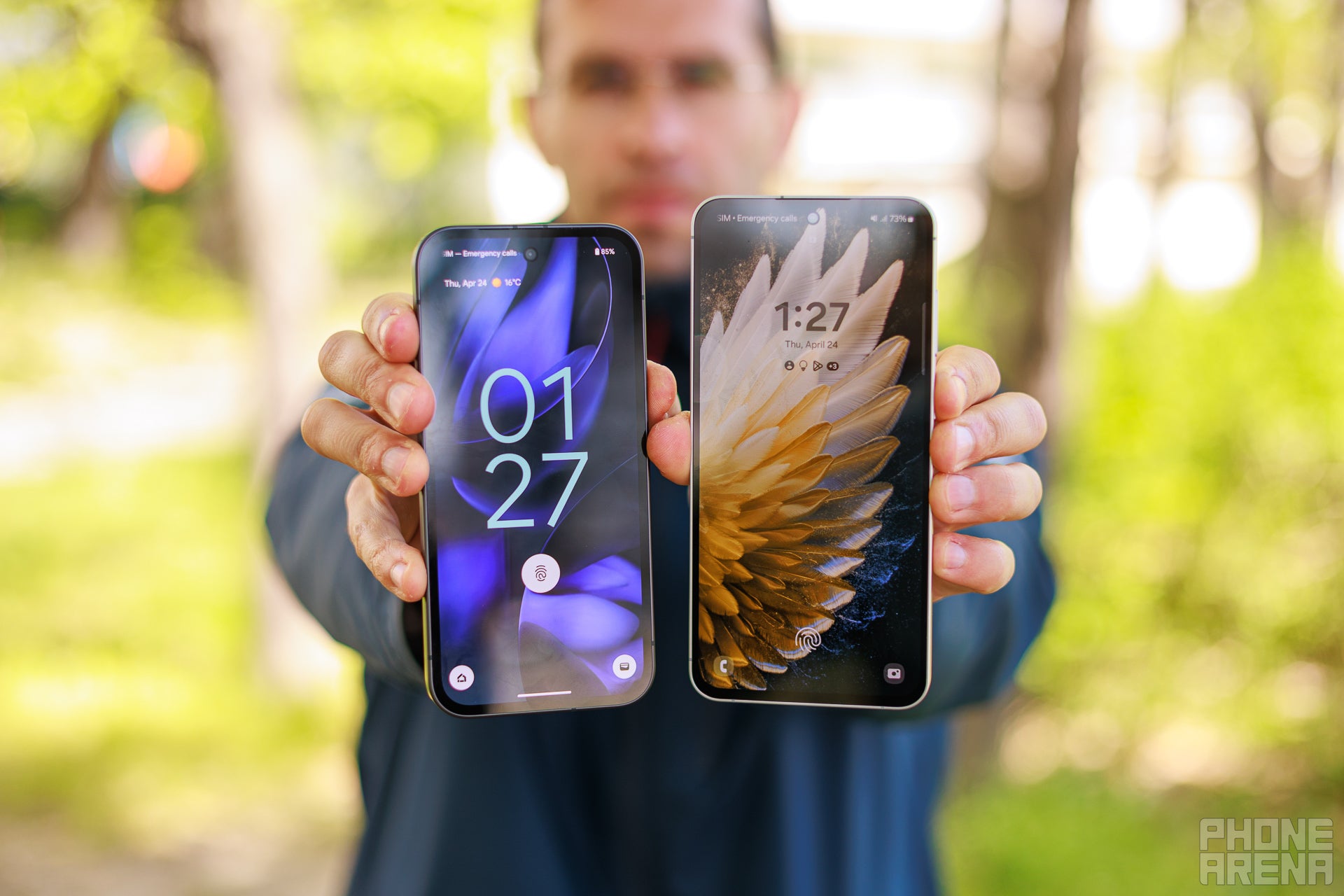Intro
This is one of the reasons why the so-called flagship killers, or affordable flagships, have gained so much popularity over the years. Google’s A-series devices that launch between two regular flagship Pixel phones are a go-to option if people try to get the best bang for the buck.
Samsung took notes and tried to emulate this with its Galaxy FE (Fan Edition) model, offering a bare-bones flagship for not a lot of money.
Today we’re going to pit against each other two models from the aforementioned companies. Models that aim to deliver a flagship experience for midrange money. In the blue corner: the latest member of the Fan Edition family, the Galaxy S24 FE. In the red corner, the recently released Google Pixel 9a.
| Google Pixel 9a | Samsung Galaxy S24 FE |
|---|---|
| More compact device, also lighter | A bit heavier and bulkier, mainly due to the larger screen |
| Bigger screen than its predecessor, still smaller than the S24 FE | Larger screen with more screen estate, less pixel density |
| Latest Tensor G4 chipset | Exynos 2400e (4 nm) chipset |
| Base memory configuration starts at 8GB of RAM and 128GB of storage | Same 8/128GB base memory configuration |
| Two cameras on the back, main and ultrawide | Similar main and ultrawide cameras but one additional telephoto camera |
| Larger battery potentially delivering better battery life | Slightly smaller battery, similar charging speeds |
Table of Contents:
Design and Size
Growing screens

The Galaxy S24 FE, on the other hand, comes in at 162 x 77.3 x 8 mm and 213 grams, making it a larger and heavier device, again due to the bigger 6.7-inch display. The Galaxy is made of aluminum and glass, while the Pixel 9a uses composites (plastic) for its back and painted metal for its frame.
The design of the Pixel 9a is very similar to the new look that Google coined with the regular Pixel 9 series. The flat front and back are present, the curvature of the corners is similar, and the flat frame also reminds us of the Pixel 9. The camera on the back is completely flush with the body and comes in the form of a pill-shaped housing for the two cameras.
The Galaxy S24 FE is a known entity when it comes to design; it mimics the S-series devices with vertically arranged camera housings on the back and flat sides, front and back. Both phones have more design similarities than differences, as in recent years Samsung, Apple, and Google have kind of uniformed the design of their phones.
Let’s quickly list the available colors for both phones.
Google Pixel 9a available colors:
- Obsidian
- Porcelain
- Iris
- Peony
Samsung Galaxy S24 FE available colors:
- Blue
- Graphite
- Gray
- Mint
- Yellow
Display Differences

The resolution is similar (FHD+)—the Galaxy S24 FE‘s screen has 1080 x 2340 pixels, which at 6.7 inches results in around 385 pixels per inch. The Pixel 9a boasts a similar resolution (1080 x 2424 pixels), but due to the smaller size, the pixel density is higher at 422 PPI.
Both panels are LTPO and can dynamically change their refresh rate, going up to 120Hz. The brightness figure for the Galaxy S24 FE is 1,900 nits peak (we measured 1,110 nits at 100% APL, which is quite good). Google cites 1800 nits in HBM (High Brightness Mode) for the Pixel 9a and 2700 nits peak, but we have to measure it to confirm or deny, as one agency used to say. Let’s do it now!
Display Measurements:
Well, the Pixel 9a lived up to all the promises and delivered astonishing brightness figures. The phone managed almost 2000 nits at 100% APL (all the display lit), and north of 2500 nits at 20% APL. The Galaxy S24 FE is not a slouch with decent brightness but the clear winner here is the Pixel 9a. In terms of other metrics such as minimum brightness, color accuracy and temperature, both phones are closely matched.
Performance and Software
Battle of the underdogs

The situation is sort of similar with the Exynos chips. Samsung phased out using them in flagship phones, and the FE model is one of the few in this tier that still gets Exynos silicon. That said, the Exynos 2400e inside the Galaxy S24 FE turned out to be quite a potent chip, scoring close to the Snapdragon 8 Gen 3 (2153 and 6631 in Geekbench 6 single and multicore tests, respectively).
We know that the Pixel 9a comes equipped with the same Tensor G4 as the regular Pixel 9 flagships, so we expect similar synthetic scores (1800 and 4573 in the same Geekbench 6 tests). Let’s check out the actual results below!
Unsurprisingly, the scores of the Tensor G4 are still nowhere near the Qualcomm silicon, and in this case Exynos as well. The Galaxy S24 FE wins in raw performance, both in the single, multicore, and graphics tests.
The Galaxy S24 FE comes with its own pack of Galaxy AI features, some of which are quite useful while others feel a bit superficial. On the other hand, the Pixel 9a features most of the AI magic from the regular Pixel 9 series, so it might have a slight advantage on the AI front, although people don’t seem to use AI as much as companies have hoped.
The software support is the same on both phones; the Galaxy S24 FE offers seven years of major OS updates, and the Pixel 9a mimics that. The Pixel 9a will last a year longer, though, being the newer of these two, with support ending in 2032.
Camera
Can one telephoto make a difference?

The Pixel 9a, on the other hand, features a very similar setup, barring the telephoto camera. The main camera is a brand-new 48MP sensor with an f/1.7 lens on top and a 23 mm focal length equivalent. The ultrawide is a 13MP sensor with the same f/2.2 aperture and a 120-degree field of view, very similar to what the Galaxy S24 FE sports.
The Galaxy S24 FE was able to resolve more detail in its main camera samples (look a the clouds) compared to the Pixel 9a, and the dynamic range is also a bit wider on the Galaxy. The colors seem more vivid in the Galaxy samples, but that’s something Samsung phones have been known for. The Pixel 9a produces more realistic images overall, albeit the quality goes in favor of the Galaxy S24 FE.
The same applies to the telephoto samples – the Pixel 9a lacks a dedicated telephoto lens and it shows. The zoom shots from the Galaxy S24 FE look much clearer and sharper with more resolved detail and better quality overall.
Here’s a quick video comparison between the two phones.

Battery Life and Charging
Capacity is king

The Galaxy S2 FE comes equipped with a rather small for the size of the phone 4,700 mAh battery, and this is reflected in our battery score. The phone ranks #69 for phones tested in the past two years, which is not a particularly impressive result.
The charging situation is also nothing to write home about; the S24 FE supports up to 25W of wired charging power and 15W wireless. This translates to 1h 21m for a full charge. The Pixel 9a boasts a pretty hefty 5,100 mAh battery (despite its smaller footprint). Time for some tests!
PhoneArena Battery and Charging Test Results:
Unsurprisingly, the bigger battery inside the Pixel, coupled with the efficient (and rather modest in raw performance) Tensor G4 got the win for the Pixel 9a here. There’s a huge difference of almost two hours in our composite score, and most of this comes from the browsing score, but in all fairness, the Pixel 9a is better in all categories.
Specs Comparison
| Pixel 9a | Galaxy S24 FE |
|---|---|
| Size, weight 154.7 x 73.3 x 8.9 mm, 186 grams |
Size, weight 162 x 77.3 x 8 mm, 213 grams |
| Screen 6.3″ OLED 120Hz FHD+ (421 PPI) |
Screen 6.7″ OLED 120Hz FHD+ (385 PPI) |
| Processor Tensor G4 4nm |
Processor Exynos 2400e 4nm |
| Versions: 8/128GB 8/256GB LPDDR5 |
Versions: 8/128GB 8/256GB 8/512GB LPDDR5 |
| Cameras: 48MP main 13MP ultra 13MP front |
Cameras: 50MP main 12MP ultra 8MP 3X zoom 10MP front |
| Battery: 5,100 mAh |
Battery: 4,700 mAh |
| Charging: USB-C 25W wired |
Charging: USB-C 25W wired 15W wireless |
Also read:
Summary

On the other hand, the Pixel 9a starts at the same $499 that made the last few generations so popular, and for that amount of money, you’re getting quite a lot. A bigger battery, Google’s AI expertise, and a more compact form factor.
Will the extra telephoto camera and the bigger screen be enough to sway people to spend $150 more? We have to wait and see.











